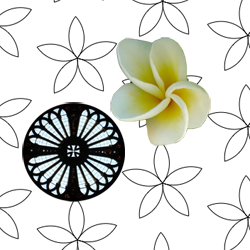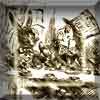Skip over navigation
Imagine you are a fabric designer. This is your brief:

Ideas to think about:
Windows users can download a free copy of Logo from FMSlogo.


Or search by topic
Number and algebra
Geometry and measure
Probability and statistics
Working mathematically
Advanced mathematics
For younger learners
Flower Power
Age 11 to 16
Challenge Level 






Create a design for a patterned fabric based on a flower motif. The motif should show rotational symmetry. The motif should be repeated across the width and length of the fabric in an interesting way which also shows symmetry.
Start by roughing out a design. You may wish to use a real flower for inspiration, or you could start from something more abstract provided it can be recognised as a flower.
When you are happy with your design, use Logo to create a print of the fabric. If you wish to submit your design, include a screenshot and the Logo program you used to create it, together with a summary of the symmetry shown by the motif and by the overall design.
Start by roughing out a design. You may wish to use a real flower for inspiration, or you could start from something more abstract provided it can be recognised as a flower.
When you are happy with your design, use Logo to create a print of the fabric. If you wish to submit your design, include a screenshot and the Logo program you used to create it, together with a summary of the symmetry shown by the motif and by the overall design.
Ideas to think about:
- The number of petals of many flowers is given by the Fibonacci sequence.
- What calculation do you need to do to work out the angle between petals if the flower is to show rotational symmetry?
Windows users can download a free copy of Logo from FMSlogo.
A good free version for Mac users is ACSlogo.
There's a version you can run directly in your browser at http://calormen.com/logo/.
You may also like
A Problem of Time
Consider a watch face which has identical hands and identical marks for the hours. It is opposite to a mirror. When is the time as read direct and in the mirror exactly the same between 6 and 7?
Holly
The ten arcs forming the edges of the "holly leaf" are all arcs of circles of radius 1 cm. Find the length of the perimeter of the holly leaf and the area of its surface.

